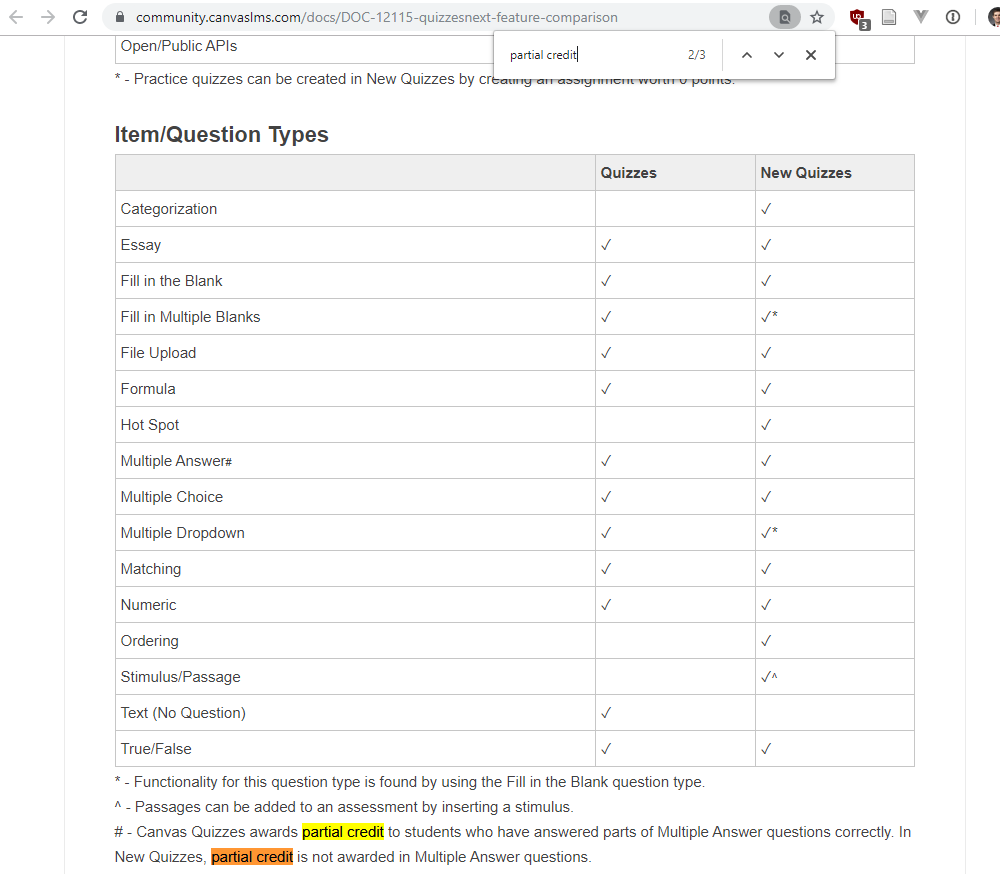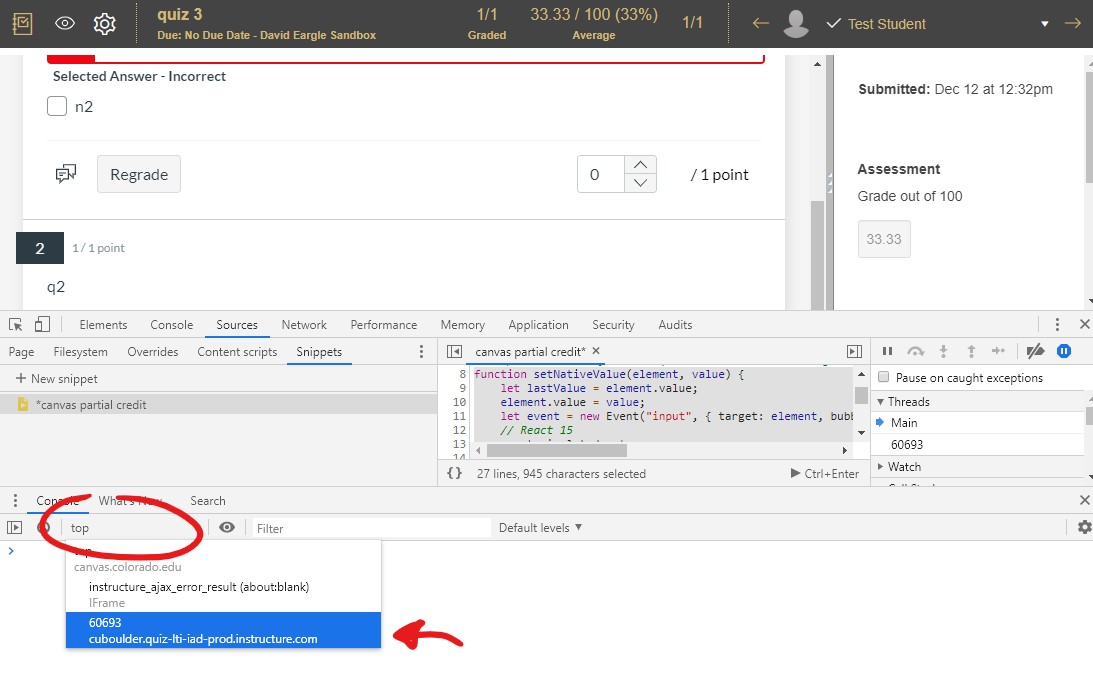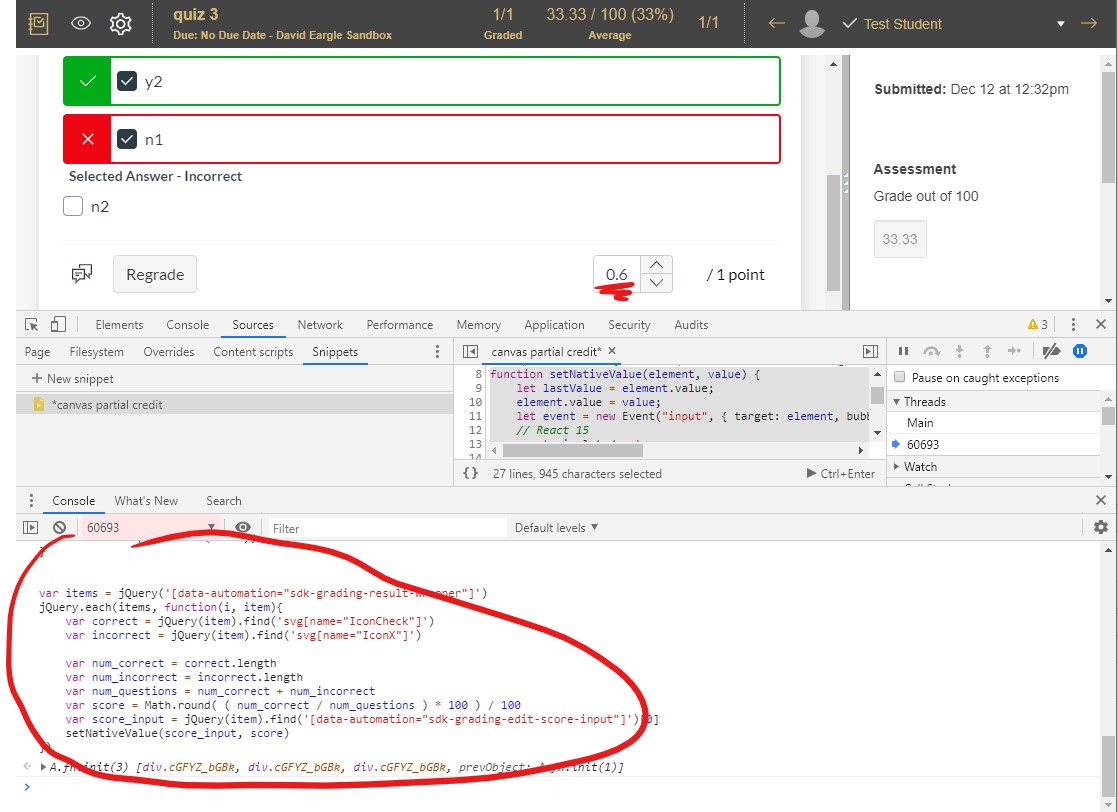Canvas LMS Quiz.Next Partial Credit Hack
Much to my consernation, as of 12-12-2019, Canvas’ new Quiz format “Quiz.Next” does not calculate partial credit for “select all that apply”-type questions. Their old (“classic”) quiz architecture offers this, but not their new one. And there are no definitive plans to offer this functionality in the future.
screenshot from here
screenshot from here
Sigh. Last year, I had to calculate partial credit by hand. That was tedious and error-prone, so I wrote me some javascript to automate the process.
// Quiz.Next uses React webframework, so this function is needed to trigger the change-event after
// programmatically setting a question's point score.
//https://stackoverflow.com/questions/30683628/react-js-setting-value-of-input/52486921#52486921
function setNativeValue(element, value) {
let lastValue = element.value;
element.value = value;
let event = new Event("input", { target: element, bubbles: true });
// React 15
event.simulated = true;
// React 16
let tracker = element._valueTracker;
if (tracker) {
tracker.setValue(lastValue);
}
element.dispatchEvent(event);
}
var items = jQuery('[data-automation="sdk-grading-result-wrapper"]')
jQuery.each(items, function(i, item){
var correct = jQuery(item).find('svg[name="IconCheck"]')
var incorrect = jQuery(item).find('svg[name="IconX"]')
var num_correct = correct.length
var num_incorrect = incorrect.length
var num_questions = num_correct + num_incorrect
var score = Math.round( ( num_correct / num_questions ) * 100 ) / 100
var score_input = jQuery(item).find('[data-automation="sdk-grading-edit-score-input"]')[0]
setNativeValue(score_input, score)
})Partial credit is calculated as the number of “correct” selections for any question, divided by the sum of “correct” and “incorrect” quiz responses. I selected the “correct” and “incorrect” options by searching for the
corresponding svg icon (either name="IconCheck" or name="IconX" for correct and incorrect responses respectively). Couldn’t find an easier way to detect whether a question was correct or incorrect because of the obfuscated react element class names.
The above code can be run from a browser development console. For example, Chrome’s is found by opening the Developer Tools – one way to do that is by right-clicking
and choosing “Inspect Element”. Then, paste the script into the console input prompt, and running it by pressing <enter>.
Navigate to a view, such as the speedgrader, which shows a student quiz submission. The Quiz.Next quizzes are loaded as html iframe elements, so the Chrome developer console needs to be told to execute
the code below in the context of the Quiz.Next iframe. Do so by using the context dropdown, selecting the nested context that looks something like quiz-lti-iad-prod.instructure.com (see below).
Then, paste in the code below and execute it by pressing “enter”:
Review the updated scores. If things look good, click the Update button at the bottom of the quiz. The score should update.
Chrome dev console allows javascript “snippets” to be saved within the browser, to be reusable later. The screenshot above shows that I have saved this code as a “snippet”. Snippets can be selected from the Sources
tab (as shown in the image above), and run by pressing Ctrl+Enter within the snippet focus window.
Took me less than an hour to figure this out. Looking at you, Quiz.Next devs…

Dave Eargle is a Senior Consultant in Cybersecurity Assessment at Carve Systems. More about the author →
This page is open source. Please help improve it.
Edit



